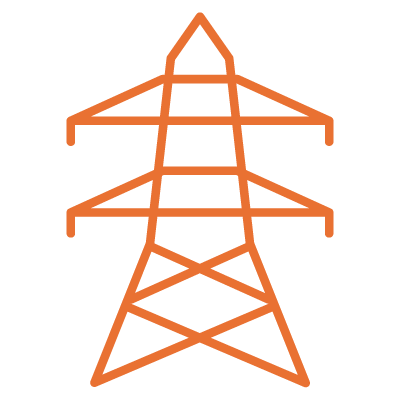The power behind progress
A reliable energy infrastructure is essential for modern societies. It forms the foundation for energy production, transmission, and distribution, supporting the diverse needs of people, businesses, and economies worldwide. Without this backbone, progress literally grinds to a halt.






Why investing in energy infrastructure matters now?
The world faces urgent challenges: climate change, energy security, and increasing global competition. To address these, targeted investments in energy infrastructure are essential. They are the key to a sustainable, reliable, and future-proof society.
Smart Grid Technology – The key to sustainable energy
The integration of renewable energy requires smart solutions. At PSW, we focus on advanced grid technologies that manage electricity efficiently and in real time . Thanks to sensors, communication networks, and intelligent control systems, smart grids optimally coordinate generation, distribution, and consumption.
Using predictive algorithms, grid operators can accurately estimate fluctuations in renewable energy sources and proactively adjust energy flows. This minimizes interruptions and maximizes available energy resources—for a more stable, sustainable grid.

Intelligent energy management with EMS
Our advanced Energy Management System (EMS) seamlessly integrates both individual components and large-scale energy systems, depending on the infrastructure. The system ensures safe, reliable operation and continuously balances energy production, storage, and consumption.
Smart data, smart decisions. Thanks to deep insight into operational data, the EMS aligns energy consumption with system needs. This includes prioritizing power supply to EV charging stations, limiting peak loads, supporting weak networks, and optimizing energy rates.
Economic and sustainable returns. Maximum battery lifespan. For energy generation and storage systems, the EMS uses market insights to strategically switch between storage, trading, and consumption. This maximizes economic returns. When price arbitrage or balancing services play a secondary role, the EMS—in collaboration with the Asset Management System (AMS)—monitors the load on batteries. This prevents excessive wear and ensures that batteries are optimally used for their primary purpose, resulting in maximum lifespan and efficiency.
Grid Blackout Prevention

The system analyzes and reacts accordingly, preventing the development of a blackout in the grid.

The network connection can be fully utilized without the risk of power outage.

The respons time, from the moment of detecting a critical situation until the system performs load adaption, can be measured in miliseconds.
Asset Management System
Smart coordination with AMS.
Our Asset Management System (AMS) is the beating heart of an efficient energy ecosystem. It collects and transmits data to all connected energy assets and orchestrates their collaboration. AMS thus leverages the power of individual entities—both large and small—to participate collectively in energy and balancing markets .
Flexibility becomes value.
Thanks to this smart coordination, even smaller assets that are not individually marketable can still provide balancing services . This opens the door to new revenue streams based on their flexibility.
Transparency via Asset Hub.
AMS shares relevant asset and market data with our Asset Hub, giving clients full transparency on performance, market interaction and returns.
Market Participation as a Service.
AMS offers a turnkey solution for market participation. Asset owners can capitalize on opportunities in the energy market—without investing in complex technology or infrastructure themselves.
Asset Hub
Asset Hub is an asset dashboard customized for your asset collection. This user interface displays key figures for asset status and health, and for some applications, market data and reveneue are visualized to give a total overview.
Layout and data-fields will vary and depend on the type of assets and application. This is adapted to best suit the user-case.
The Asset Hub is web-based, so no software installation is required. If desired, an Asset Hub API is available for customers who wish to integrate this into their own systems.
